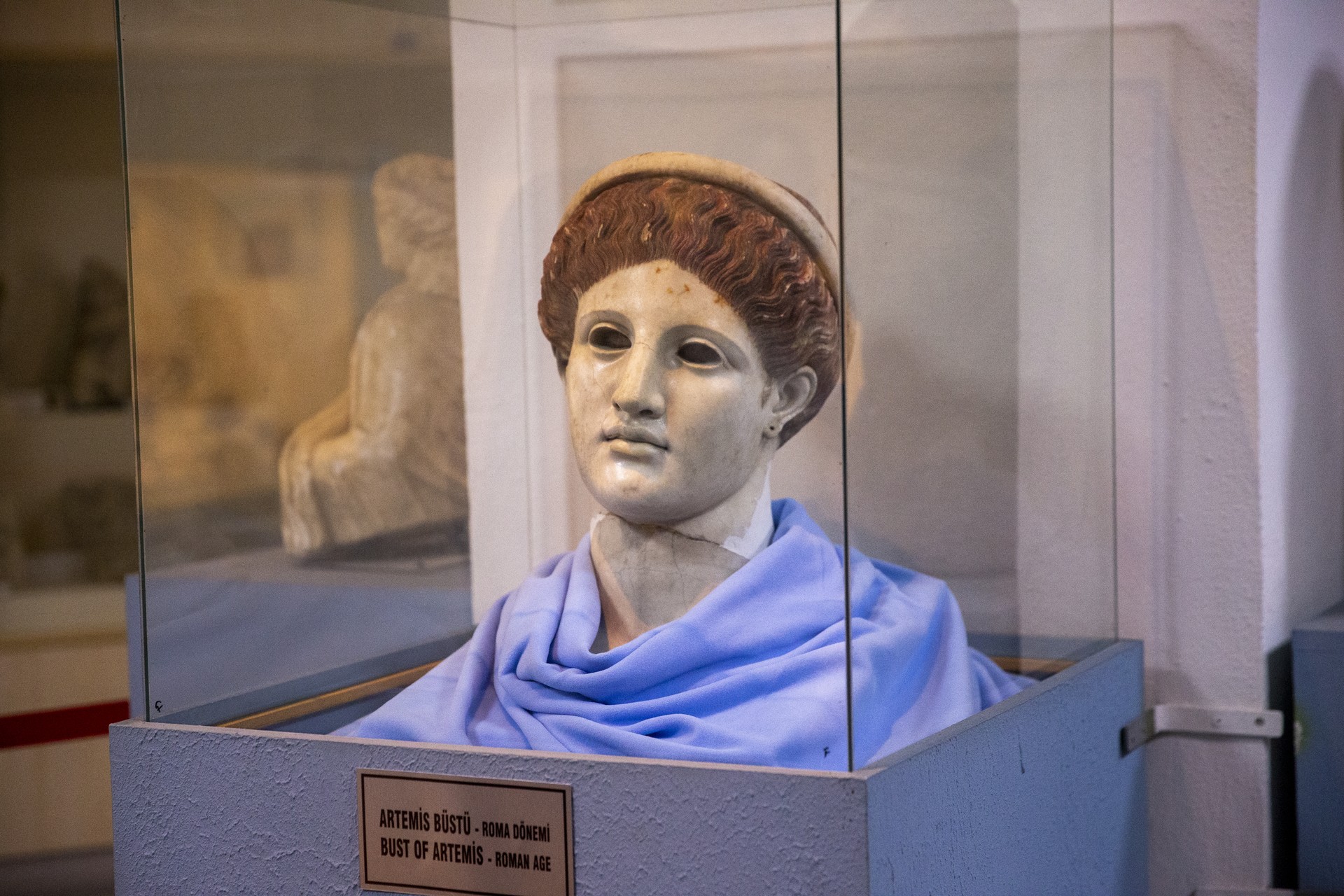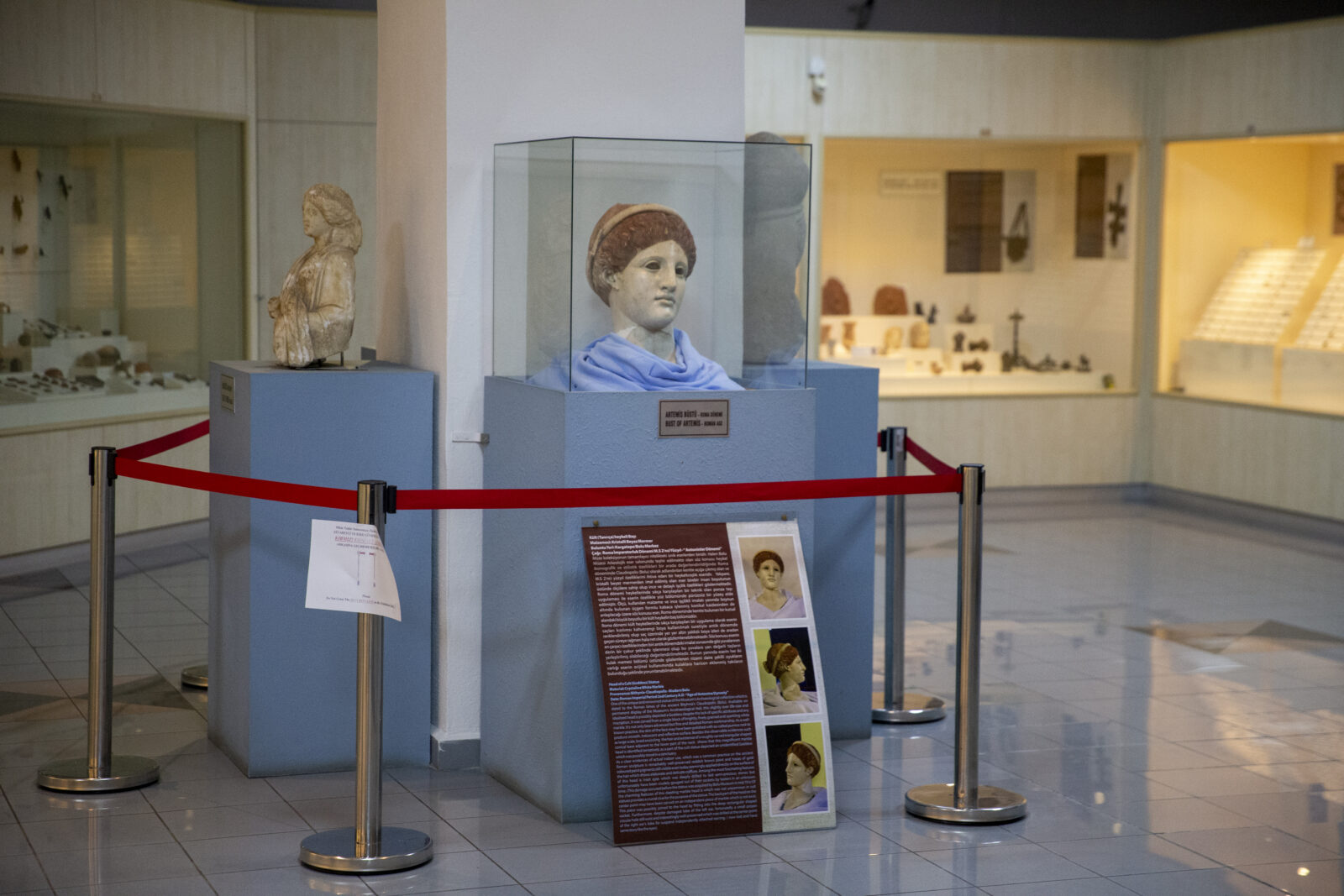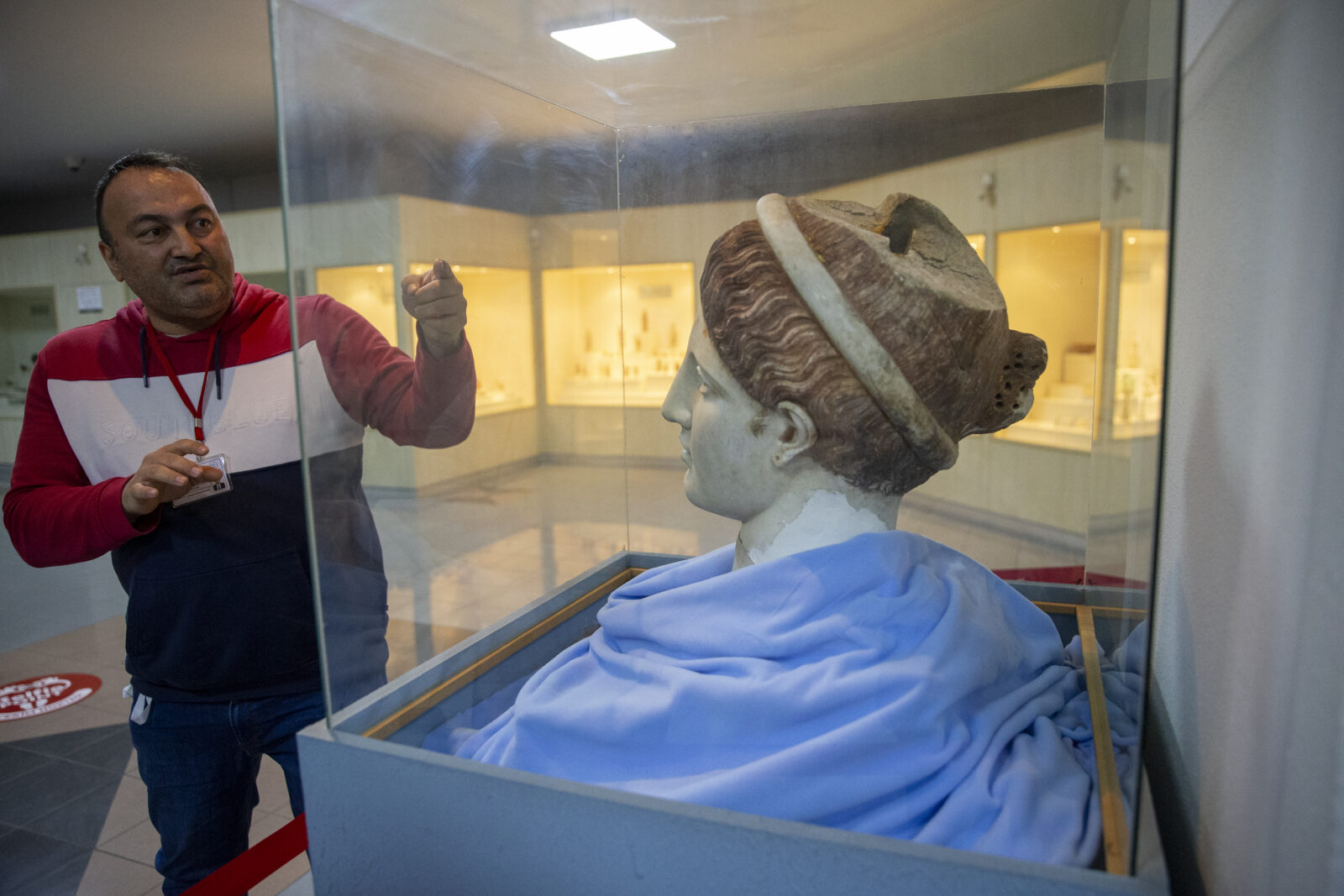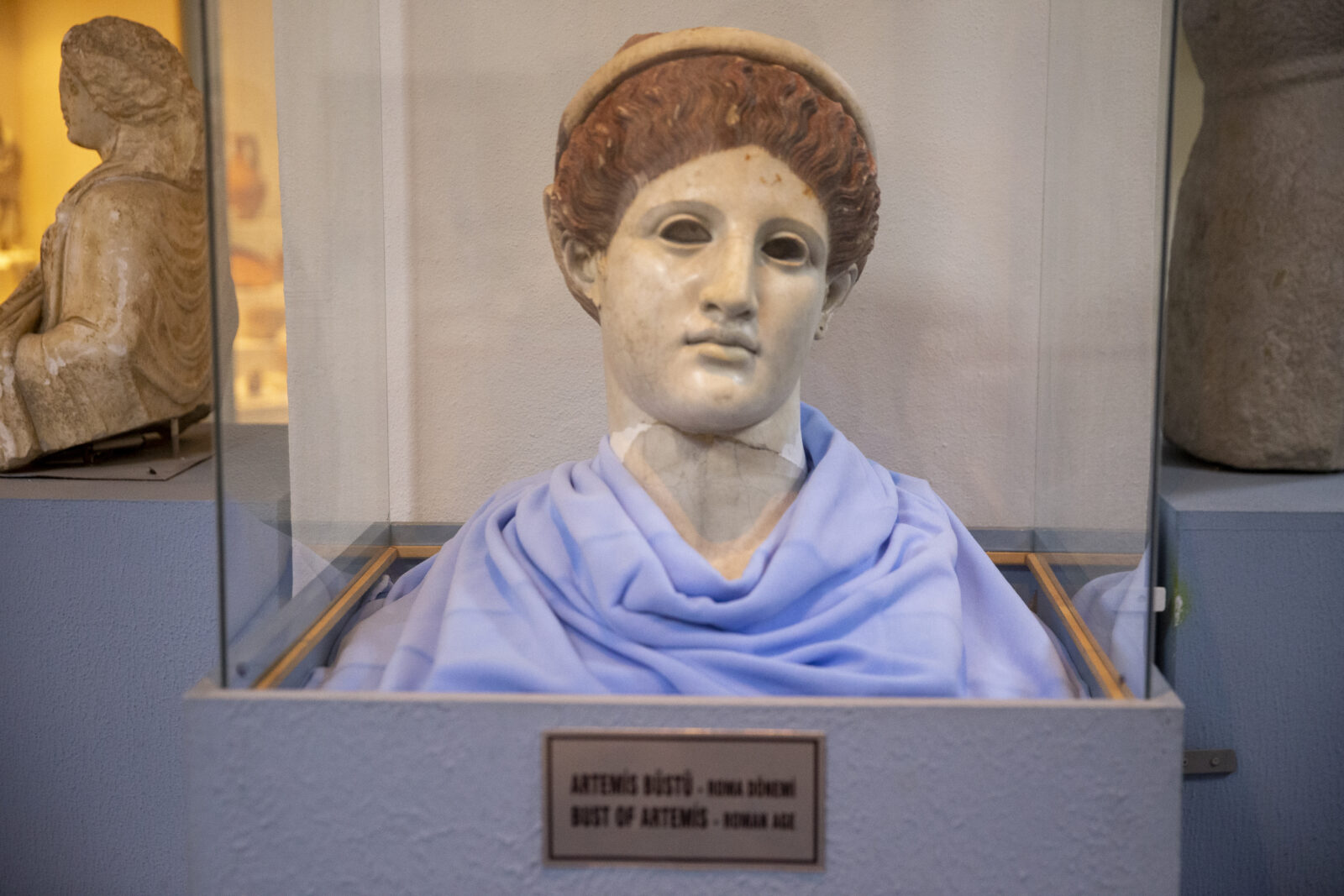
A 2,000-year-old bust of the Greek goddess Artemis, discovered during construction work in Bolu in the 1970s, captures attention with its original painted details.
One of the rarest finds in the world due to its material and painted surface, the Artemis bust is being preserved for future generations at the Bolu Museum. This museum, which offers visitors a journey through time, displays artifacts from the Neolithic, Early Bronze, Phrygian, Urartian, Lydian, Hellenistic, Roman, Byzantine and Ottoman periods.
Key pieces on display include statuettes of the health deity Asclepius, his daughter Hygieia, and assistant Telesphoros, alongside Roman-era sculptures of Herakles, Hermes, and Nymphe.
Gladiator tomb steles further enrich the collection. However, the painted Artemis bust remains a standout exhibit, drawing significant visitor interest.

The bust believed to depict the Greek goddess Artemis, was uncovered during construction in Bolu’s Akpinar neighborhood in the 1970s. What makes it extraordinary is the preservation of its original painted surface, a rare feature among ancient sculptures.
The Bolu Chamber of Commerce and Industry has commissioned a 3D model of the bust to enhance its recognition.
Bolu Museum Assistant Director Gul Karauzum Yildiz highlighted the importance of the Artemis bust, emphasizing its rarity in Türkiye and the world: "While many museums in Anatolia showcase statues, very few retain their original colors. This bust stands out for its vibrant preservation. Its high-quality marble and status as the first discovered goddess statue in Bolu make it invaluable."

Archaeologist Hakan Uluturk elaborated on the bust's technical significance:
"The polychromy—multi-color technique—used to create this sculpture was popular during the Roman period. Yet, only a handful of sculptures with their original paint have survived to this day."
Uluturk explained that the statue's coloration was achieved using a technique called "ganosis," which involved waxing the marble to protect and preserve its painted surface.

"This preservation method is key to why the colors remain visible today. While polychromy was a common technique in Greco-Roman art, environmental factors often caused these details to fade.
The Artemis bust’s colors endured likely because of its storage in a protected, covered environment and the skilled application of the technique," he added.
Bolu Museum’s painted Artemis bust serves as a rare window into the colorful artistry of the ancient world, preserving the brilliance of Greco-Roman sculpture for future generations.
Visitors to the museum can witness this extraordinary piece alongside a diverse collection that reflects Türkiye’s rich cultural heritage.